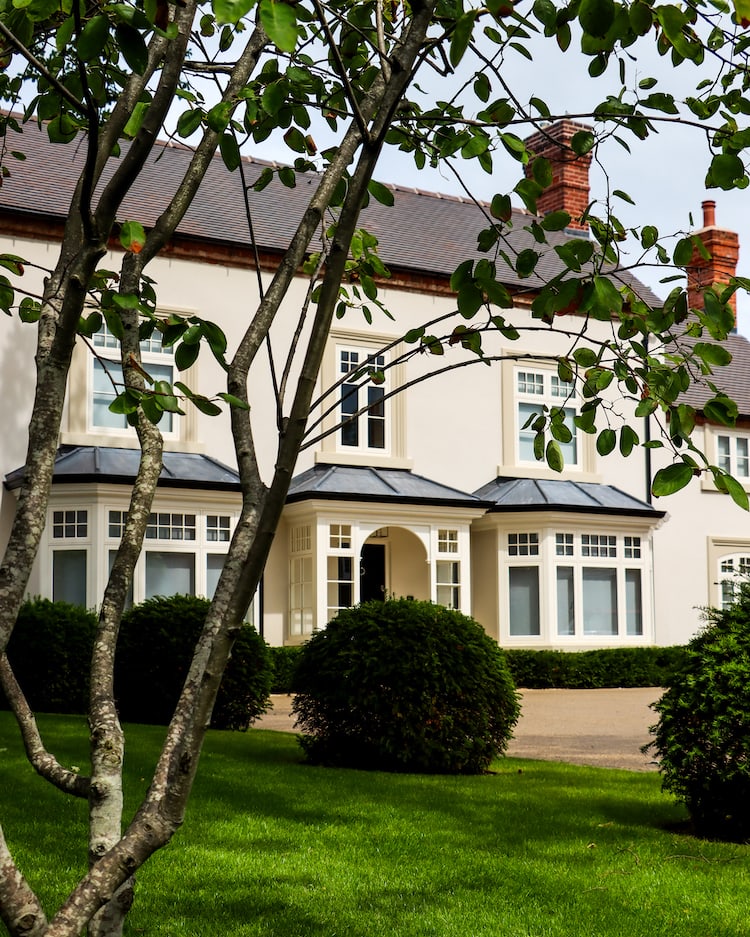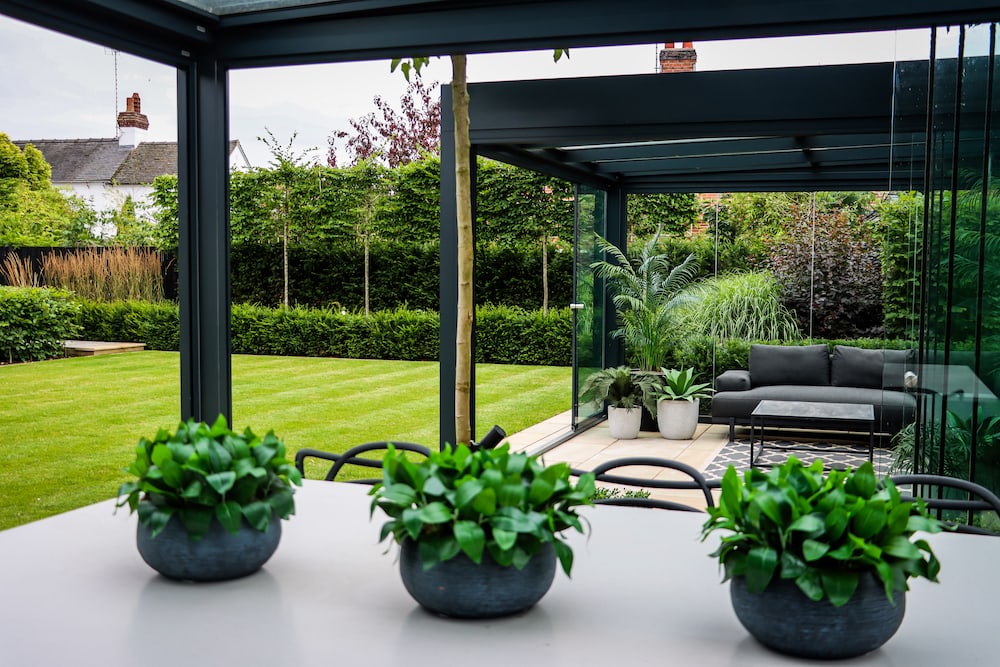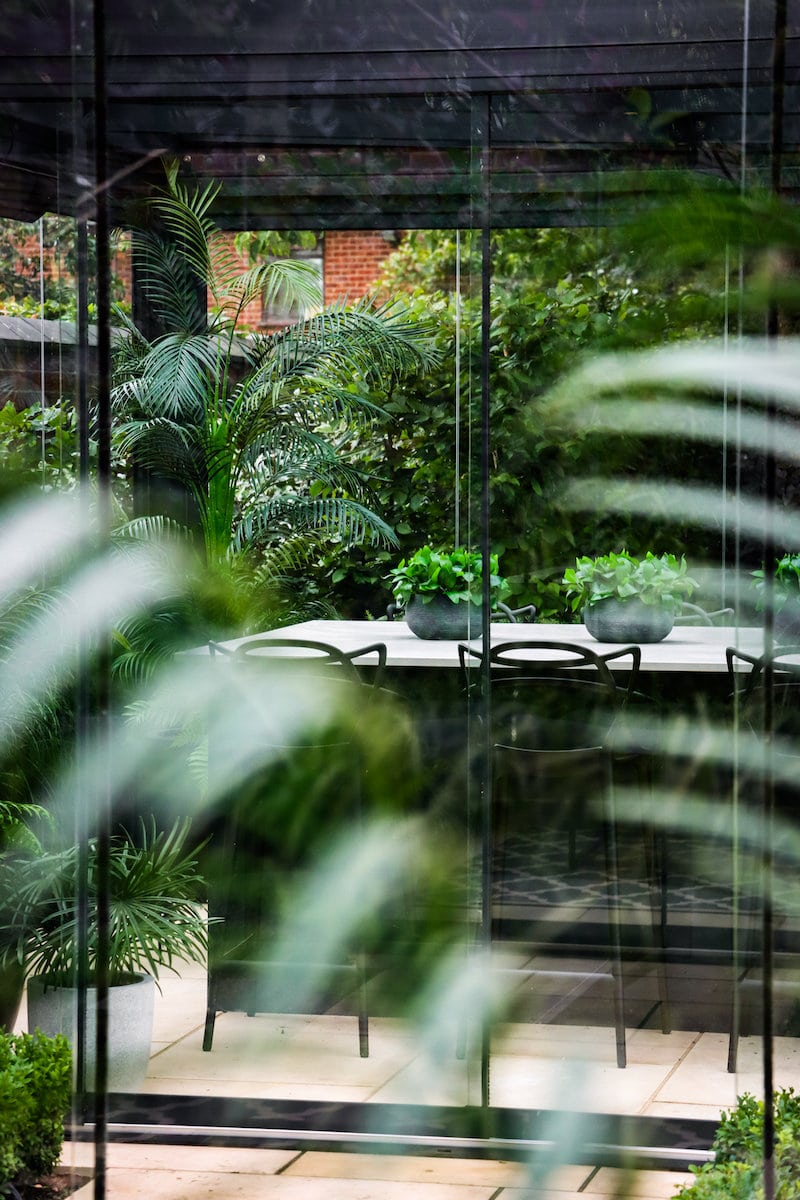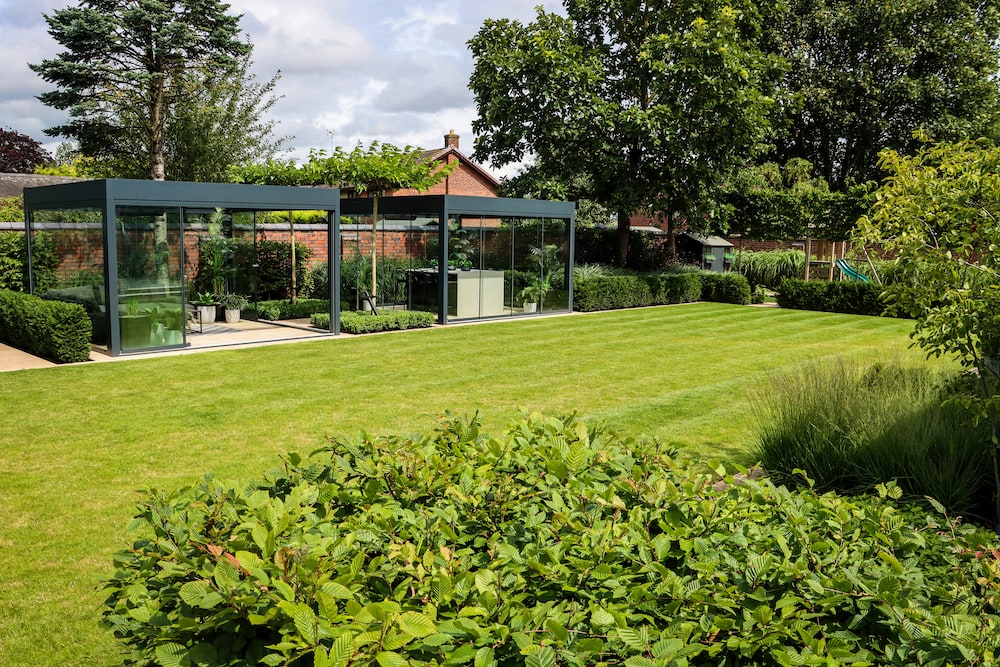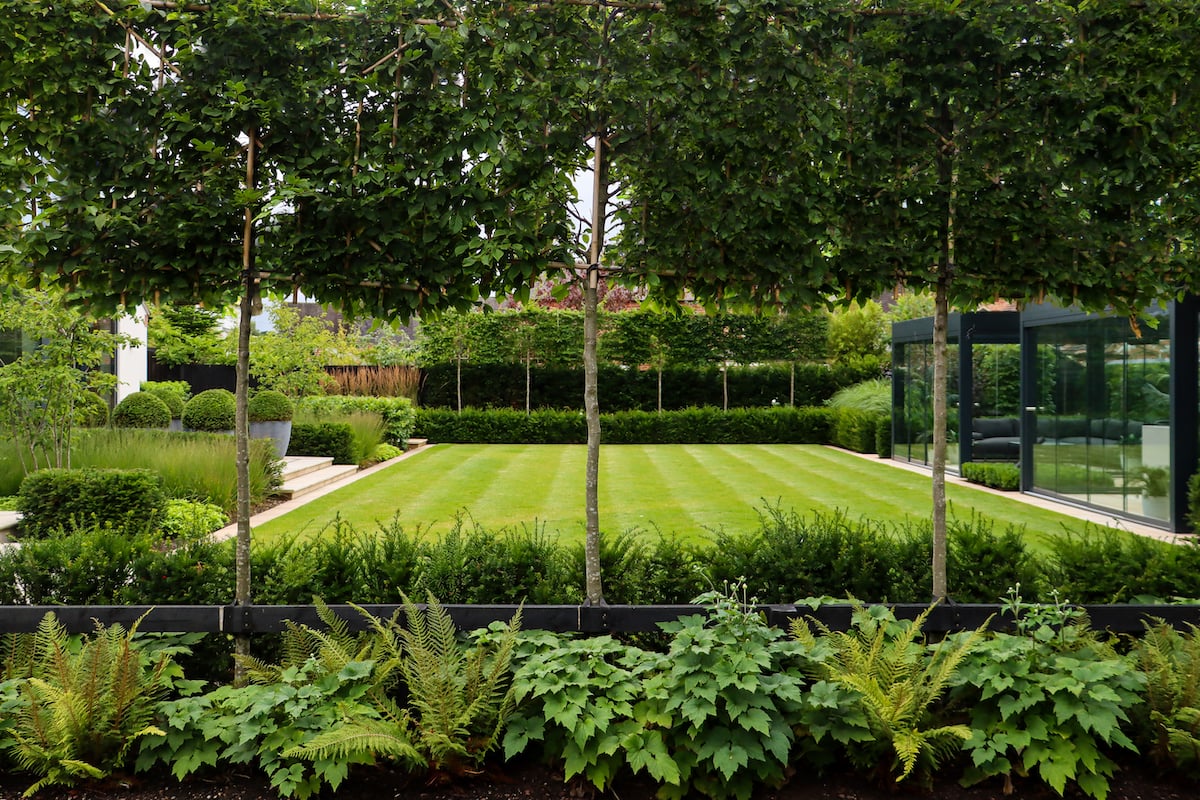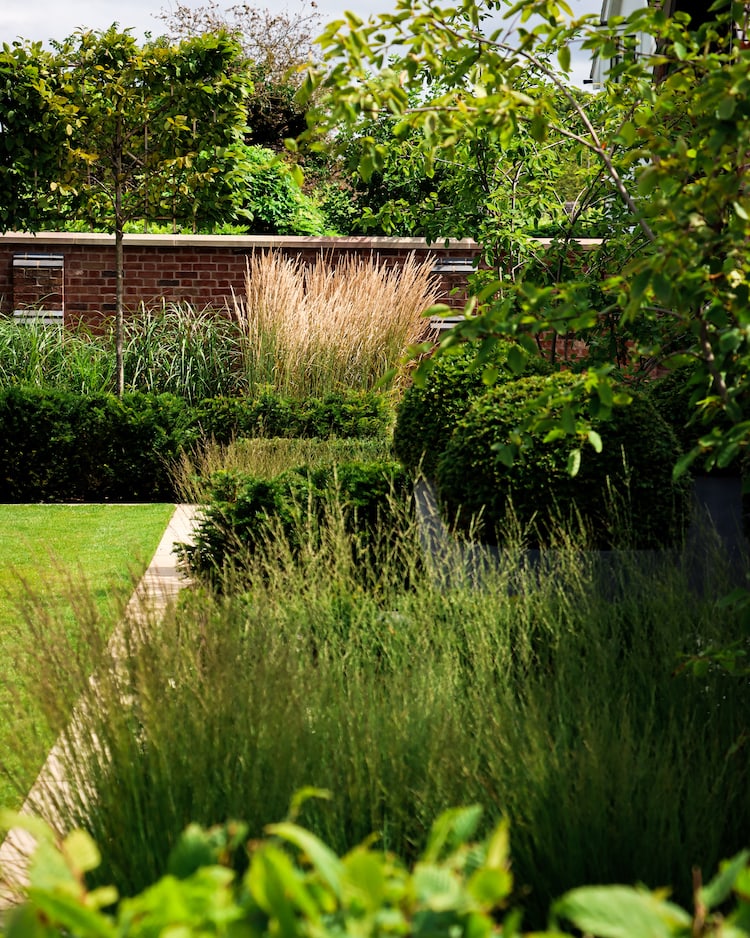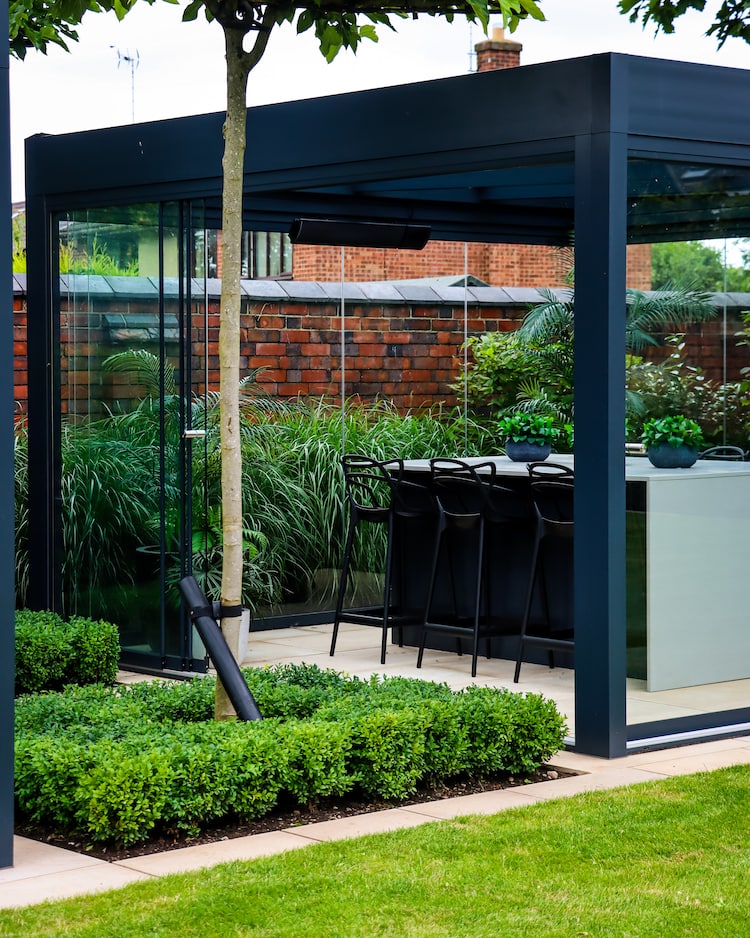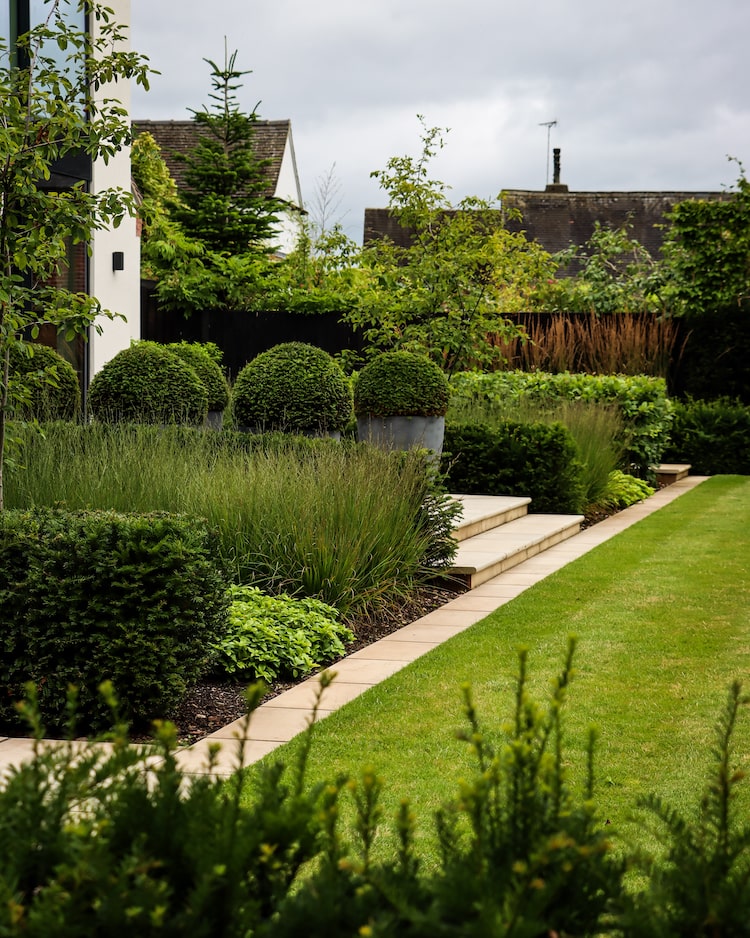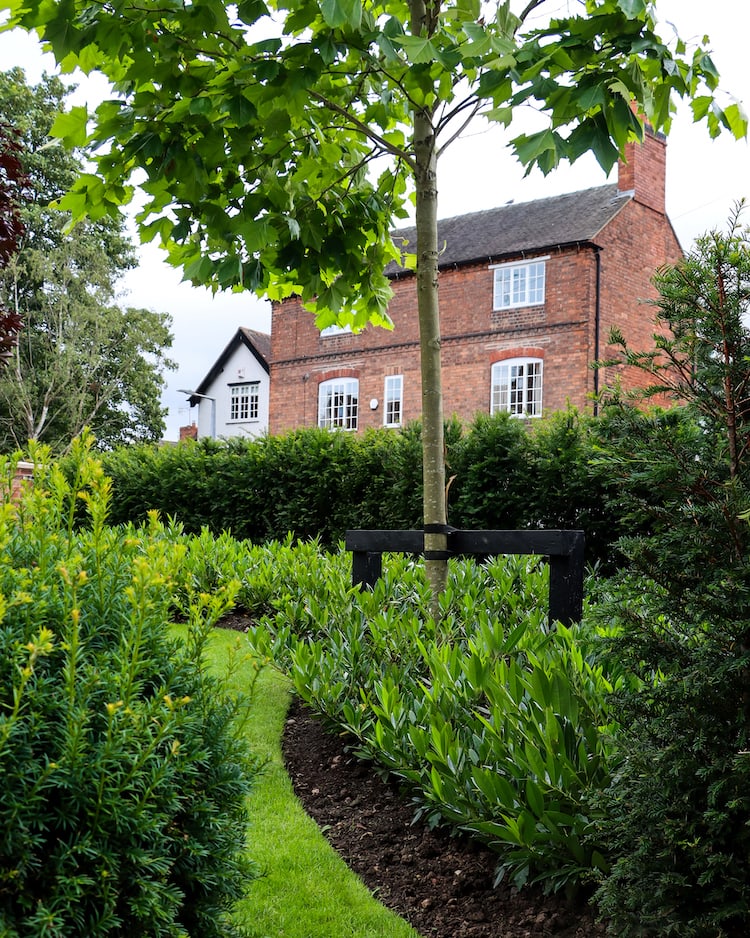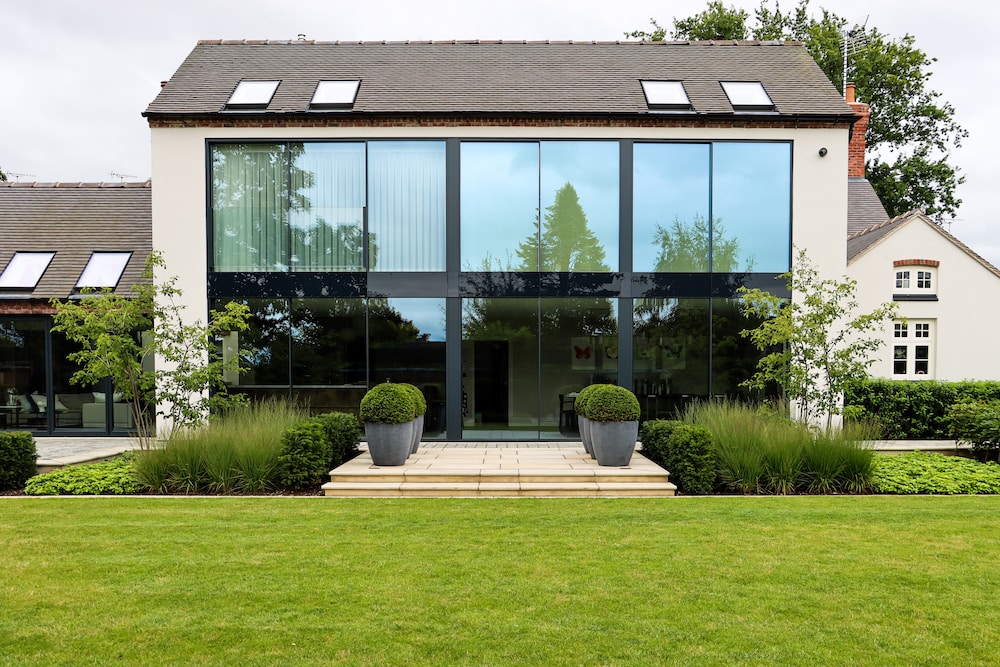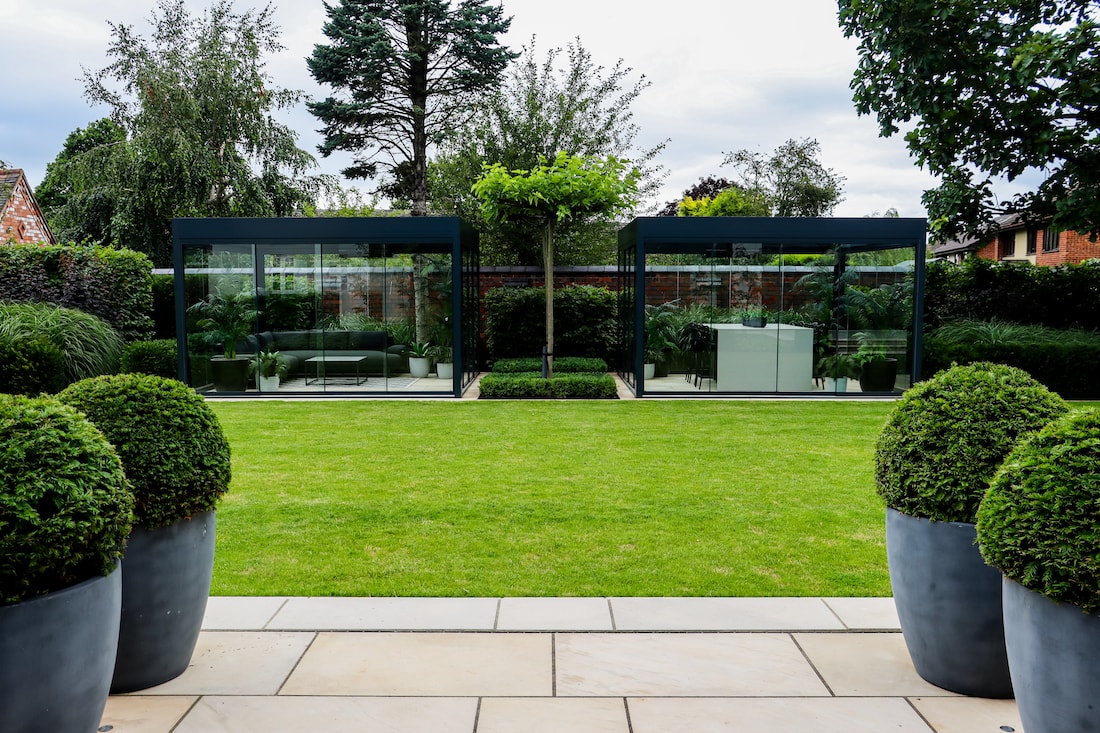The Brief
Situated in the heart of rural Derbyshire, George Street is a house of two halves. Originally built around 1800 and lovingly extended over the years, it had stood vacant since 2015, waiting patiently for new custodians to restore its character. Now located within a sensitive conservation area and home to two protected, much-loved trees, the property’s transformation was a collaborative effort between our team, the architects, interior specialists, and planners.
The clients approached us with a simple but considered brief: to create a garden that would honour the traditional elegance of the Georgian frontage while complementing the bold, contemporary extension at the rear. Their lifestyle didn’t allow for intensive gardening, so the scheme needed to be low maintenance yet beautifully structure.
Design & Planting
To the front, we re-established the grace of Georgian symmetry with a restrained and timeless design. A permeable driveway framed by new brick walling, hand-forged gates and railings leads to manicured lawns and clipped topiary spheres. The tightly trimmed hedges frame the façade, allowing the restored stonework and elegant proportions of the house to take centre stage. Subtle, architectural lighting brings the frontage to life after dark, balancing formality with warmth.
The rear garden, in contrast, celebrates modernity. Anchored by the striking double-height glass façade of the extension, it was designed by our Director of Design & Innovation, Lee Bestall, who recalls:
“Our clients were refreshingly honest from the start – they weren’t gardeners. So we designed a space where plants are treated as art, chosen for their form and texture rather than their colour or flowers. It’s a garden of structure, light, and balance.”
Evergreens, grasses, and clipped hedging form the backbone of the design, providing year-round texture and rhythm. There are few flowers here, just the occasional white bloom to punctuate the greens and silvers. Soft ferns and the feathery plumes of Miscanthus lend movement and calm, especially in the low light of late summer and early spring. Privacy was a key consideration, so existing trees were retained wherever possible, and two rows of pleached Hornbeam were added to give height, balance, and definition between the children’s play area and the main lawn.
In place of traditional seating arrangements, we introduced two glazed garden cubes, visually linked by a pair of tabletop trees. Both structures open inward with sliding glass walls, one housing a cosy corner sofa, the other a sleek island bar with Wi-Fi and a drinks fridge, creating an elegant, weatherproof space that extends the home’s interior into the landscape.
Considerations & Constraints
Behind the garden’s clean lines lies a story of complexity and patience. The site’s constraints began with its sensitive conservation status and the protection of two large TPO trees, one of which sadly declined during the build and required extensive liaison with the local council for safe removal and replacement.
The project was constructed in two distinct phases, with front and rear gardens built independently. While this allowed for correct seasonal planting in the rear, the front proved far more challenging. With multiple teams working on-site – from architects and builders to interior installers, electricians, and utility contractors – access was often limited and sequencing became a daily puzzle. Delays caused by gas works, party wall agreements, and logistical constraints demanded constant coordination.
Through collaboration and perseverance, every obstacle was met with a solution, ensuring that each phase aligned seamlessly with the overall design vision.
Success.
Today, George Street stands as a striking blend of past and present. A Georgian home reborn for modern living. The front garden embodies quiet sophistication, while the rear offers a calm, architectural retreat framed by evergreens and glass. It is both functional and beautiful, a garden that complements its house rather than competes with it.
For our team, George Street is a reminder that simplicity often hides the greatest complexity. Behind its minimal elegance lies a year of careful planning, coordination, and craftsmanship. The finished garden, like the house itself, celebrates the balance between tradition and innovation, structure and softness, nature and design.

